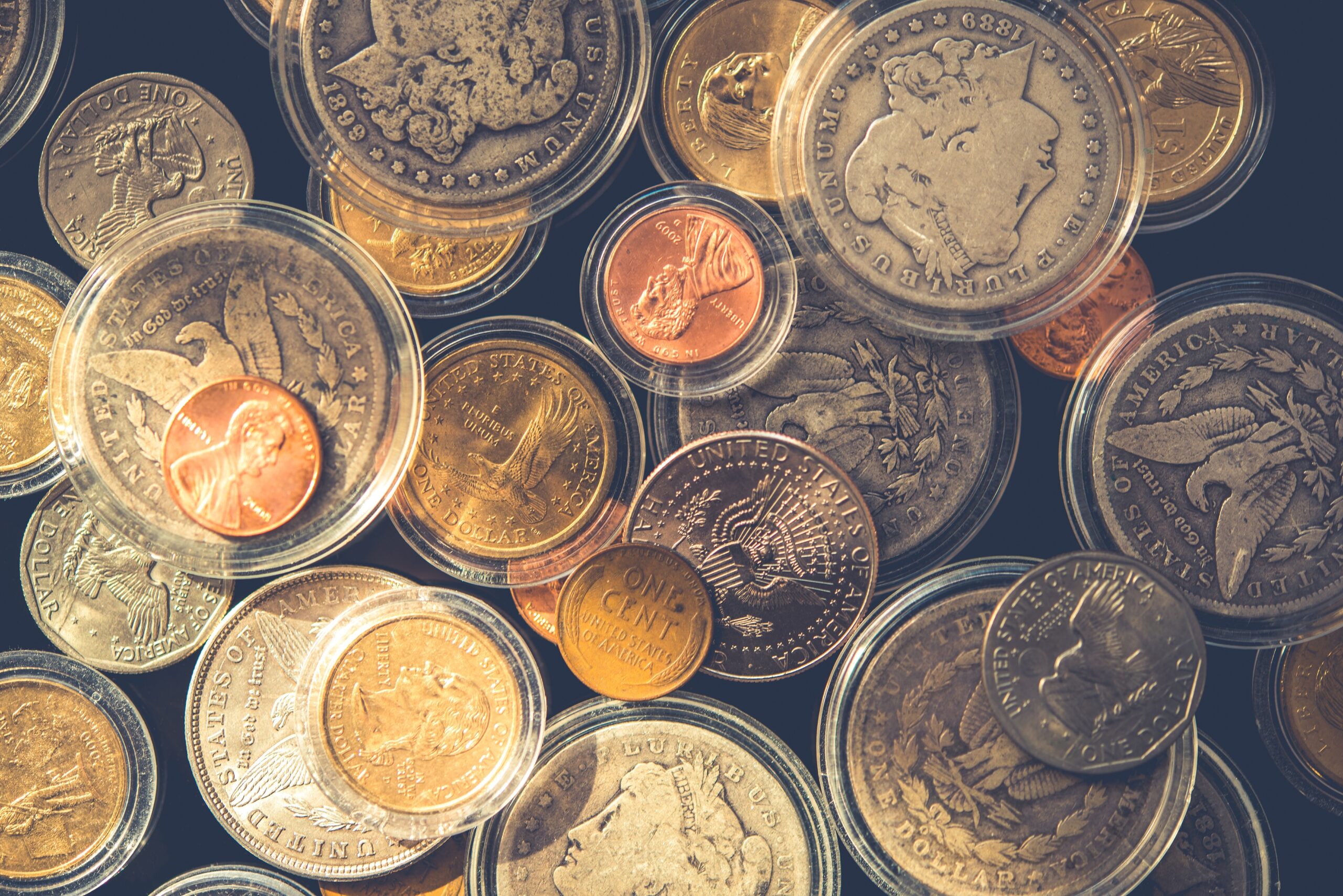Collecting coins is more than just a hobby for me—it’s a lifelong passion that has brought financial rewards, historical education, and countless hours of enjoyment. As someone who has been buying and selling coins for over 35 years, I’ve learned that building a profitable coin collection isn’t just about luck or stumbling upon rare pieces. It takes knowledge, strategy, and a deep appreciation for the craft. In this blog, I’ll share insights and tips on how to start, grow, and profit from your own coin collection.
The Appeal of Coin Collecting
Why collect coins? For me, it started when I was a teenager working at my father’s gas station in Mount Pulaski, Illinois. One day, a customer handed me an 1878 silver dollar as payment. That coin fascinated me. I saw it not just as currency but as a piece of history.
Coin collecting combines the excitement of treasure hunting with the stability of investing. Coins are tangible, historical artifacts that often increase in value over time. Whether you’re fascinated by history, seeking a profitable investment, or simply enjoying the beauty of old coins, there’s something in this field for everyone.
Educate Yourself
The foundation of any successful coin collection is knowledge. Before you dive into purchasing coins, invest time in learning about the market. Some key areas to focus on include:
- Understanding Coin Grading: Coin grading determines a coin’s condition and directly impacts its value. Familiarize yourself with the scale used by professional grading services like the Professional Coin Grading Service (PCGS) or the Numismatic Guaranty Company (NGC).
- Identifying Valuable Coins: Learn which coins are sought after and why. Factors like mint errors, limited mintage, and historical significance often drive value.
- Staying Updated on Precious Metals Prices: The value of silver and gold coins fluctuates based on the market prices of these metals. Websites and apps can help you track these changes in real time.
Books, online resources, and local coin clubs are excellent places to start. Engaging with seasoned collectors can provide invaluable insights.
Start Small, Think Big
You don’t need a fortune to start a coin collection. Begin with small, affordable pieces. For instance, U.S. silver coins minted before 1965 contain 90% silver and are relatively easy to find. These coins are an excellent way to get started while building your knowledge and confidence.
Once you’re comfortable, gradually invest in more significant pieces. I started with small finds as a teenager, accumulating coins from my father’s business, and eventually grew my collection to include rare and valuable pieces.
Build Relationships with Trusted Dealers
One of the keys to success in coin collecting is working with reputable dealers. A trustworthy dealer can guide you in purchasing authentic coins and help you avoid common pitfalls, such as counterfeit coins or overpriced items.
Attend coin shows, join local coin clubs, and network with other collectors. Over time, you’ll develop relationships with experts who can provide valuable advice and insider knowledge.
Diversify Your Collection
A profitable coin collection is often a diverse one. Don’t limit yourself to a single type of coin. Instead, explore different categories, such as:
- Gold and Silver Bullion Coins: These coins, like the American Gold Eagle or Canadian Silver Maple Leaf, are tied to the value of their metal content and are excellent for hedging against inflation.
- Rare Numismatic Coins: Coins with historical or artistic value can often outperform bullion in terms of profitability.
- Foreign Coins: Adding coins from other countries can provide variety and opportunities to find unique pieces.
Diversification not only makes your collection more interesting but also reduces financial risk.
Timing the Market
One of the most critical aspects of building a profitable coin collection is knowing when to buy and sell. For example, in 1980, the price of silver soared to over $50 an ounce, and I sold my collection of silver coins for nearly $100,000. Timing made all the difference in maximizing my profits.
Keep an eye on the market and be prepared to make strategic decisions. Sometimes, holding onto a coin for a few years can significantly increase its value.
Proper Storage and Maintenance
The way you store your coins can make or break your collection. Coins are delicate and can easily lose value if they’re scratched, tarnished, or damaged. Here are some tips for proper storage:
- Use Coin Holders or Capsules: These protect coins from physical damage and environmental exposure.
- Store in a Dry, Temperature-Controlled Environment: Humidity and temperature fluctuations can damage coins.
- Avoid Handling Coins with Bare Hands: Use gloves or hold coins by their edges to prevent oils from your skin from causing tarnish.
The Joy of Collecting
Beyond the financial rewards, coin collecting is deeply fulfilling. Every coin has a story to tell, whether it’s a silver dollar minted in the 1800s or a gold coin from a historic treasure trove. For me, the thrill lies in uncovering these stories and sharing them with others.
Traveling across the country, visiting estate sales, and hunting for hidden treasures is an adventure I never tire of. It’s a joy I’ve passed on to my children and grandchildren, who share my fascination with coins and antiques.
Final Thoughts
Building a profitable coin collection requires patience, knowledge, and a keen eye for detail. Start small, stay informed, and enjoy the process. Over time, your collection can become not just a source of financial security but also a legacy that connects you to history and future generations.
Coin collecting is more than just a business for me—it’s a lifelong passion that continues to bring joy and purpose to my life. Whether you’re a seasoned collector or just starting, I hope this guide inspires you to explore the fascinating world of silver and gold.
